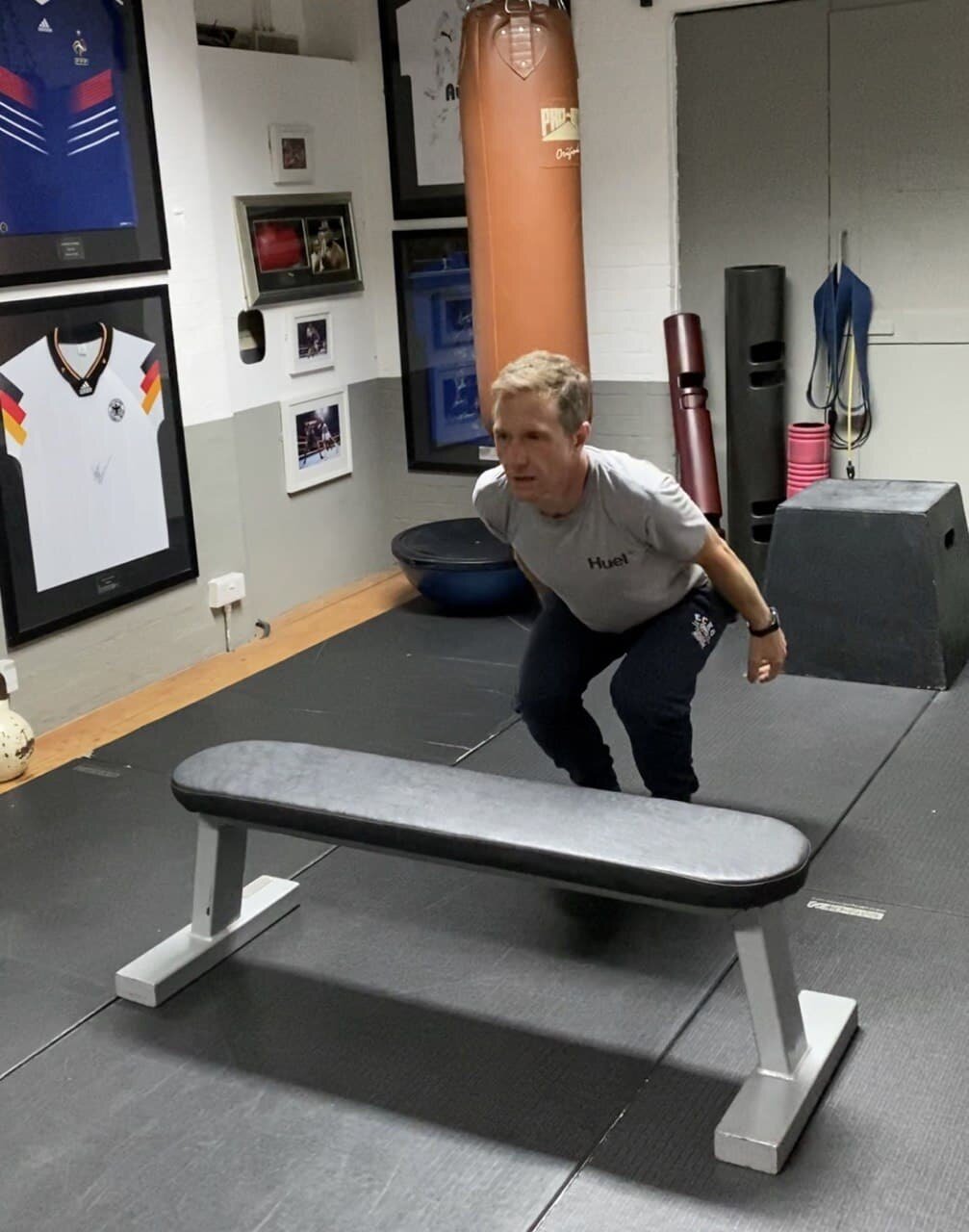As the racing season comes to an end for most of my competitive cyclists, I thought I’d share a few thoughts on some speed and power based exercises I’ve been using with them this summer. In strength and conditioning terms these are the icing on a cake that has been baking for some time. Or to use a more traditional analogy - the peak of a pyramid whose base has been built on solid strength and conditioning work for (often) 18 months to 2 years.
If the conditioning fundamentals I outlined in my book “Ride Strong” are the base of the off the bike pyramid, then these examples add speed, power, and peak performance to the tip of that pyramid. The meat in the sandwich in between the two is made up of the traditional loaded barbell (or Dumb bell) exercises such as squats, deadlifts, bent over rows etc. and other accessory movements.
Building a base for your strength and conditioning
In “Ride Strong” I’ve pitched the exercises “between rehab and performance where most everyday cyclists need to start”, an approach I still recommend 5 years after publication. However, I also consider heavier exercises like deadlifts, squats and lunges as essential progressions, especially for those committed to optimal performance or those looking for competitive gains. In some cases, I have regressed clients exercises from where they think they should be, starting by correcting faults to build a better foundation before adding more load back in later. For many, correcting flexibility or postural deficits and increasing stability is necessary first, and then these traditional strength exercises can be performed effectively with good form and adequate load.
The conditioning essentials and my success formula from my book “Ride Strong” form the foundations of the strength and conditioning pyramid that delivers peak power potential
For those who are patient enough to trust the process, the fun bit then follows. In a perfect world where you have good range of movement, good posture and the barbell basics have been mastered, the Olympic lifts (clean and jerk and snatch) and derivations thereof offer speed and power progressions from the S & C fundamentals. Some plyometric work (jumps etc.) can also improve speed and power. Though phases of this kind of work can be cycled in and out of an annual program simply for the progression, for cyclists whose competitive season peaks in the summer, it makes sense to integrate them during that part of the year.
In any context strength (force) x speed (velocity) = power, and that’s easy to visualise as a cyclist. When you change up a gear and then add cadence (speed) to that greater strength demand you produce more power. For top end speed and power (anything above threshold type intensity) significant muscular overload is required, and the nervous system as well as the muscular systems must be trained and ready to respond. If the muscles are concerned mostly with crude force development, the ‘neural’ element of the partnership could be said to be about the activation of all the muscle fibres, co-ordination of muscle movements together, and particularly your ability to move fast.
For many cyclists familiar with training zones, either using power or heart rate as a measure, this top end zone can be all too mysterious, targeting physiological systems (such as the ATP-CP system) where any steady state measure is irrelevant. The elusive fast twist fibres that many cyclists struggle to engage for short sprints and accelerations can be found with fast, short movements moving light to moderate loads. And these can be activated or awakened with targeted off the bike conditioning. For competitive cyclists especially, being able to produce high power outputs in short bursts can literally make or break the race result.
I would argue that off the bike speed and power conditioning can help access these higher levels on the bike for peak performance
Not every cyclist will need or want to go into these zones very often, but for those that do, the absence of neuro-muscular speed work off the bike could be the limiting factor in accessing these top end levels of power and performance. For any road racer, crit racer or track rider, some dynamic speed and power training off the bike will increase performance potential on the bike. Equally for off road disciplines like cyclo-cross, MTB and BMX, the potential gains are perhaps even more obvious. Even for the everyday cyclist, feeling quicker and more dynamic on the bike can feel good and get you out of trouble in traffic, or help you accelerate over the crest of a hill for the fun of it.
Dynamic work off the bike alone will not necessarily lead to optimal cycling performance though. Integrating explosive conditioning with discipline specific work on the bike will enable the body to translate the gains into the relevant cycling performance environment. For most cyclists who race regularly, the racing stimulus alone will be enough for the brain and body to make the necessary connections. But including accelerations, jumps, attacks and sprints on the bike in training will enhance the process further.
Rob can still perform the jerk, but it’s better for him to work with dumb bells
Suzannah has the range of movement and core control to go straight to barbell jerk
For me the specific exercise selection will depend most on the cyclist and where they are in their conditioning, more than what might be the perfect choice of exercise on paper. Explosive barbell overhead work requires near perfect upper back and shoulder biomechanics to be performed safely, and for many cyclists using dumb bells in a more neutral grip allows some very similar movements without the risk of shoulder or neck injury. Movements can be blended and combined to produce new combinations, but the goal is always to produce dynamic speed and power movements that can be executed well, not to produce perfect weight lifting technique. I’ve included some examples of specific exercises with some of my cyclists here to give you food for thought.
Vertical jumps are a great bodyweight exercise harnessing squat strength and translating it into speed and power
I tend to work with around 5 reps with these movements, and ensure the quality of the movement remains to the last rep. Longer rest periods of several minutes are sensible, unless I am deliberately super-setting with another exercise to create fatigue. In my experience when a rider is well trained these movements create a lot less soreness than typical strength exercises and dove-tail nicely with racing or race training during the season. Of course every individual is different, so getting to know how best to schedule these work outs for each rider is just a case of trial and error.
A full bar bell snatch is a bit much for most cyclists, but this dumb bell snatch to split landing works all the big muscle groups and main movements in one hit.












